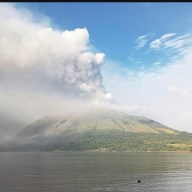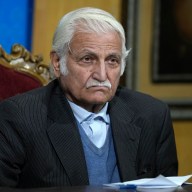COLOMBO, Sri Lanka – For diehard followers, the almost mythic commander who led a terror-driven Tamil insurrection in Sri Lanka still lives – despite persuasive evidence to the contrary.
This week the government declared it had finally killed Velupillai Prabhakaran and proclaimed victory against his Tamil Tiger rebels, crushing a 25-year rebellion that the United Nations estimates had cost between 80,000 to 100,000 lives.
But many Tamils don’t believe it.
For some radical nationalists, especially those living abroad, it hardly matters whether the legendary guerrilla is alive or dead, as long as the story line carries on of an independent Tamil state in part of this Sinhalese-dominated island.
Prabhakaran, who was 54, was a larger-than-life character who championed the dreams of the Sri Lanka’s minority Tamils. He was seldom seen in public, yet his word was unquestioned. He governed by fiat over a de facto state in one-third of this Indian Ocean island.
Even many Tamils who abhorred the Tigers’ suicide bombings and assassinations embraced him as their hope for dignity and equal rights in Sri Lanka.
Bloggers compared Prabhakaran to the Hidden Imam, who was born in the 9th century but who Shi’ite Muslims believe never died. Believers say the Twelfth Imam will return one day to bring peace and justice to the world.
The Sri Lankan army says Prabhakaran was among the last to die in the civil war’s final battle Tuesday. His body was found in a thicket of mangroves along a shallow lagoon on the desolate northeastern coast.
Photographs of the familiar mustachioed face, a handkerchief covering the fatal head wound, were splashed on the front pages of Sri Lanka’s national papers Wednesday. Unpublished pictures show a sickle-shaped gash through the bone of his forehead. His dog tags – number 001 – and ID card were put on display for the cameras.
Army Cmdr. Gen. Sarath Fonseka confirmed in an interview published Sunday that Prabhakaran’s remains were quickly cremated. “His body was burnt in that area and the ashes were sent to the sea,” he told the Sinhalese-language Rivira newspaper.
The British Broadcasting Corp. reported Sunday that a Tamil Tiger official confirmed Prabhakaran had been killed. The BBC quoted Selvarasa Pathmanathan as saying the Tiger leader “attained martyrdom” while fighting Sri Lankan forces May 17.
Kanagalingam Sivajilingam, an ethnic Tamil legislator said the government’s behaviour was suspicious, and he doubted the corpse shown in the photographs and in television footage was indeed that of the founder and leader of the Liberation Tigers of Tamil Eelam.
“I can’t prove if he is among the living or dead. It is up to the LTTE to do that. But I have my doubts about this body,” he told The Associated Press.
Why, he wondered, were independent journalists not allowed to see the body before it was burned and the ashes scattered. “Only a DNA test will be an effective proof,” he said.
Feeding the disbelief were the previous erroneous reports of Prabhakaran’s end. He was thought to have been killed in fighting in 1987 by Indian troops summoned to help stop the civil war. He was believed to have drowned in the 2004 tsunami, along with some 35,000 Sri Lankans. Then he was reported to have been hit during bombing last year.
News of Prabhakaran’s death this time brought thousands of cheering people onto the streets of Colombo, and set off a frenzy of self-congratulatory festivities by the government.
But Tamil neighbourhoods were silent. Several world capitals with large Tamil expatriate communities witnessed demonstrations of protest.
“Looking at the incidents, the reports appear false to me. It is very much possible that he is alive. I am saying this because he has escaped the jaws of death many times and because of his fighting spirit,” said Baskaran Vinasithami, who lives in Switzerland.
On Friday, the TamilNet website, the main LTTE information outlet, said reports of Prabhakaran’s death were “engineered rumours” spread by the government.
“Our beloved leader is alive,” it quoted a man identified only as Arivazhakan, head of the Tigers’ International Secretariat of Intelligence.
In apparent support of that contention, a photograph whizzed across the Internet of a smiling Prabhakaran watching an image on television of his own face staring lifelessly upward. In the photo, he is dressed in fatigues, leaning back in a chair and smiling as he holds a Tamil-language newspaper headlining his demise.
Web searchers quickly found the 2005 photograph from which the image was digitally edited. In it a clean-shaven Prabhakaran is talking to his former political aid Anton Balasingham, who died three years ago. The apparent hoaxers even gave their Prabhakaran facial hair.
In the interview, Fonseka gave more details of the final clash, in which the rebel chief and the last 100 of his men were trapped in an ever-tightening vice after nearly a year in retreat.
“We were not in a hurry,” Fonseka said of the offensive that began in 2006.
The last engagement began just before 3 a.m. Tuesday, Fonseka said. About 150 rebels were killed in the pre-dawn battle as Prabhakaran withdrew deeper into the mangroves. His body was found more than seven hours later.
That account varied with initial reports that Prabhakaran had been killed trying to escape in an armoured ambulance on Monday. News of his death was announced by the government’s information department and by the state media at least 12 hours before he was actually killed, according to Fonseka’s account.
That only deepened suspicions among the Tamils. Sivajilingam, the legislator, called it an inexplicable contradiction.
Fonseka warned that the spirit of Eelam, or a Tamil national home, may outlive Prabhakaran.
“What we did in this fight was to destroy the front-line killers, but we don’t think that all Eelamists are destroyed,” the army chief said.
“Everyone must remember that the war is still not over. As an army, as a government and as a people we must realize this. Otherwise all what we did will be a waste.”
















